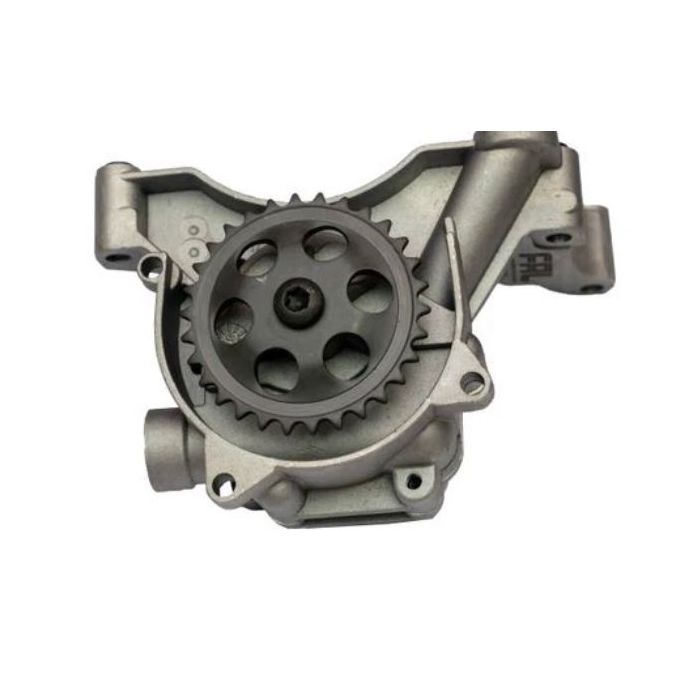Increase fuel efficiency with a top-tier clp engine.
Increase fuel efficiency with a top-tier clp engine.
Blog Article
Just How a Clp Engine Can Improve Performance in Different Industries
The arrival of CLP engines marks a considerable shift in functional performance throughout different fields, driven by their capability to optimize fuel consumption and lessen downtime. Industries such as production and logistics stand to acquire substantially from their durable style and regular power outcome, which promise to improve operations and boost efficiency. As companies progressively focus on sustainability alongside efficiency, the role of CLP engines becomes also more critical. What stays to be seen is how these developments will certainly form the future landscape of commercial procedures and their effect on broader economic trends (clp engine).
Overview of CLP Engines
CLP engines, or Continuous Fluid Propellant engines, represent a significant innovation in propulsion technology, especially for area applications. These engines use a constant feed system that enables for the sustained expulsion of propellant, leading to improved effectiveness and performance contrasted to typical solid or hybrid propulsion systems. By keeping a consistent circulation of liquid propellant, CLP engines can attain much more precise drive control, which is essential for navigating spacecraft in various objective scenarios.
The design of CLP engines integrates innovative materials and innovative fuel administration systems. clp engine. This leads to reduced weight and boosted integrity, crucial aspects for long-duration room objectives. In addition, the continuous operation minimizes the threat of combustion instability, an usual obstacle in conventional rocket engines.

Advantages in Production
The production of Continual Liquid Propellant (CLP) engines presents several noteworthy advantages that enhance both performance and cost-effectiveness. Among the main benefits is the structured production procedure, which decreases the complexity related to typical propulsion systems. By making use of liquid propellant, makers can accomplish better accuracy in engine efficiency, causing enhanced energy output and minimized waste.
In addition, CLP engines facilitate a higher degree of modularity, allowing for simpler combination into various manufacturing lines. This flexibility can substantially decrease preparations and improve overall functional versatility. Using CLP technology additionally has a tendency to minimize the need for comprehensive upkeep due to fewer moving components, which equates into minimized downtime and operational costs.

Applications in Logistics
Leveraging Continuous Liquid Propellant (CLP) engines in logistics provides considerable benefits in functional performance and integrity. These engines provide a robust option for various transport demands, enabling the smooth activity of products across large distances. The inherent design of CLP engines permits consistent power output, which converts into smoother and much more predictable transport schedules.
Among the crucial applications of CLP engines in logistics is in durable products transportation, where they can drive both ground and aerial cars. Their ability to keep high efficiency under differing lots problems ensures that delivery timelines are fulfilled, thus boosting client fulfillment. In addition, CLP engines can be incorporated right into automated logistics systems, helping with real-time tracking and optimizing route preparation.
Furthermore, the durability of CLP engines decreases maintenance downtime, enabling logistics business to optimize their operational abilities. This is specifically helpful in warehousing procedures, where performance in dealing with and moving products is important. As logistics proceeds to evolve, the assimilation of CLP engines stands for a forward-thinking method that not only enhances efficiency however additionally supports the sector's expanding demands for dependability and speed.
Effect On Energy Performance
Just How do Continual Fluid Propellant (CLP) engines enhance power effectiveness in transportation? CLP engines make use of a consistent circulation of liquid gas, maximizing burning processes and preserving content a secure thrust outcome. This style lessens energy losses connected with standard burning engines, where fuel shipment can differ and bring about inadequacies.
The continual procedure of CLP engines enables a much more reliable thermal cycle, resulting in greater details impulse compared to standard engines. clp engine. This converts to lowered fuel usage for the exact same amount of work done, significantly lowering functional expenses across different transport sectors, consisting of aviation and maritime markets
Moreover, the capability of CLP engines to preserve optimal site link efficiency under varying lots conditions minimizes the need for constant velocity and slowdown, further improving gas effectiveness. Boosted energy efficiency not only adds to cost financial savings but additionally brings about decrease greenhouse gas emissions, straightening with worldwide sustainability goals.
Future Trends and Innovations
Arising improvements in Continual Fluid Propellant (CLP) engine modern technology pledge to change the landscape of transportation efficiency and sustainability. As sectors pivot towards greener choices, CLP engines stand at the center, integrating ingenious materials and style techniques that improve efficiency while reducing ecological influence.
One of one of the most encouraging patterns is the fostering of hybrid systems that incorporate CLP engines with renewable resource resources. This synergy can optimize gas intake and minimize emissions, lining up with international sustainability objectives. Innovations in computational liquid dynamics (CFD) are promoting the layout of even more aerodynamically effective engines, leading to decreased drag and improved fuel performance.
In addition, the advancement of wise tracking systems is readied to improve functional effectiveness. These systems utilize information analytics and IoT technology to optimize engine performance in real-time, making sure that the engines operate within their most efficient specifications.
As research remains to check out alternative propellant solutions-- such as biofuels and artificial gas-- Continued the future of CLP engines looks promising. By taking advantage of these developments, sectors can not only enhance their performance yet additionally add dramatically to a cleaner, more lasting future in transport.
Final Thought
Finally, CLP engines represent a substantial development in effectiveness throughout several sectors. Their ability to optimize fuel intake and lower functional prices, combined with a continual feed system, improves power output and operational dependability. The combination of advanced products and fewer relocating components reduces upkeep needs, while positioning with sustainability objectives placements CLP engines as a critical modern technology for the future. Proceeded technology in this area guarantees further renovations in performance and environmental efficiency.
Report this page